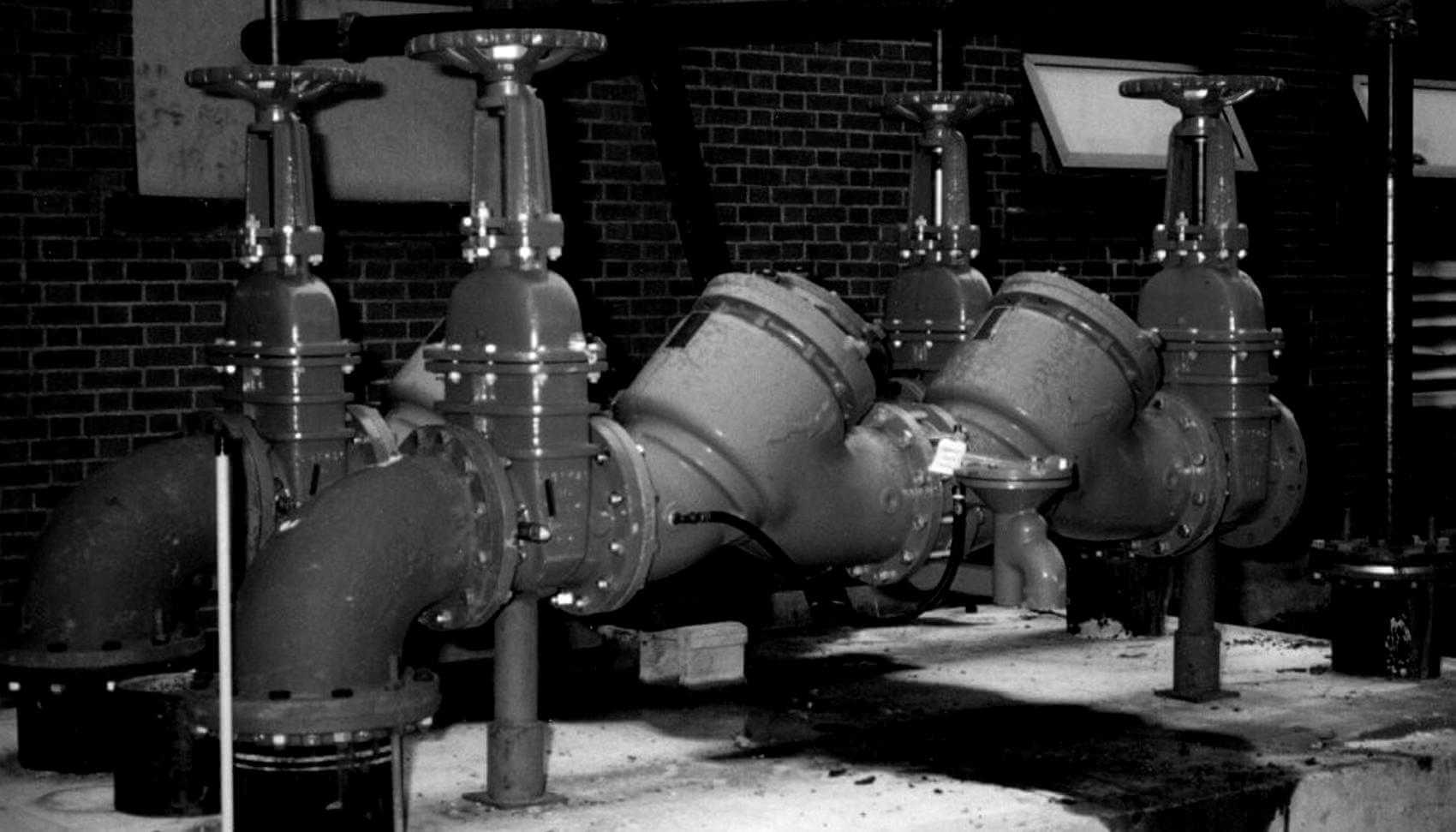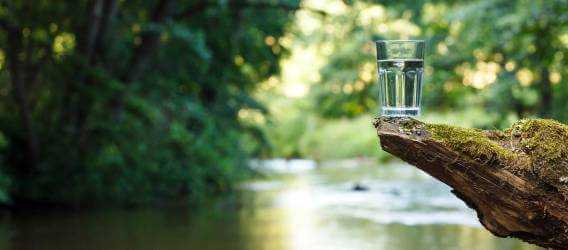A cross connection is a piping arrangement that allows a potable water system to be connected to a source of potential pollution or contamination. It's very important to protect against cross connections in order to prevent backflow into potable water. Ultimately, backflow can cause contamination of an entire public water supply, posing a risk for anyone using that water for drinking, cooking, bathing or any other purposes.
If there's an incident resulting in contamination of public drinking water (due to improper or unprotected plumbing connections causing backflow), the owner responsible or occupant of the property can be held responsible for damages.
Backflow is the reverse flow of water and/or other substances entering into the drinking water supply from any source other than the water distribution pipes.
There are two types of backflow:
- Back siphonage: this type of backflow occurs when there is a reduction of pressure in the water distribution system (e.g., a water main break, a shutdown for repair, or a high demand for water due to firefighting).
- Back pressure: this type of backflow occurs when there is greater pressure from a premise source other than that supplied from the water distribution system (e.g., a pump for a pond or pool, an irrigation system).
In order to comply with the Halifax Water Regulations, as approved by the Nova Scotia Utility and Review Board, property owners must do the following to prevent backflow:
- Remove any unnecessary cross connections and isolate your water system from the public system
- Protect cross connections that can't be eliminated by attaching an approved backflow prevention device or assembly
- Ensure all backflow preventers are tested annually by a certified tester
Halifax Water has recently made some changes to its Back Flow Prevention program. As a result, effective November 1, 2021, Backflow Solutions, Inc. (BSI Online) will be contracted to administer the cross-connection control/backflow tracking program. BSI Online is a leading provider of backflow tracking, with an extensive track record managing backflow programs for municipalities throughout North America.
What's changing:
The new tracking program will be utilizing BSI's service, www.bsionline.ca. The testing company will now be required to submit backflow test results online via BSI's Online secure website. This includes a filing fee of $15.95 per device.
Beginning November 1, 2021, all test reports for backflow assemblies for the Halifax Water service area will only be accepted via BSI Online at www.bsionline.ca. There is no filing fee during the first month of the program. Beginning December 1, 2021, the $15.95 filing fee will take effect.
Why is it changing:
As the number of backflow assemblies were added to the system, it became a large task to maintain an up-to-date database. Halifax Waters Cost Causer pay approach supports this change as the filing fee will be linked to the customer utilizing the device.
What does this mean to you:
As of November 1, 2021, BSI will begin sending letters, on behalf of Halifax Water, with Backflow Prevention Device testing requirements, including due and past due notifications.
Customers will still need to hire a certified tester to complete an annual backflow assembly test. Please provide the customer confirmation number (CCN) listed in the top right corner of the Notification letter to your backflow tester to properly file your backflow test reports via BSI Online. You may also use this CCN at www.bsionline.ca to verify when your backflow test has been filed, locate a list of testers in your area, or simply learn more about backflow.
Certified testers will now submit annual backflow test results through BSI Online. Obtain the customer confirmation number (CCN) listed in the top right corner of the customer's notification letter. Then go to www.bsionline.ca to file test results. BSI Online will be reaching out to testers/testing companies in the next few weeks for webinar training on how to register and use the BSI Online system.
Please contact BSI Online Customer Support with any questions:
Phone: 1 (604) 492-0163
Email: backflow@bsionline.ca
New Premises
As a condition of connecting to the water supply, the backflow prevention device is required on new industrial, commercial, institutional (ICI), and multi-residential (MR) domestic and sprinkler services at time of meter installation and service activation.
Existing Premises
Halifax Water has a retrofit program in place to phase in the required backflow prevention device installation on existing industrial, commercial, institutional (ICI), and multi-residential (MR) domestic services.
The installation and maintenance of backflow prevention devices installed on domestic and sprinkler service lines ensures that potential contaminants will not flow from a premises back into the distribution system. The type of backflow prevention which should be installed is based on how hazardous it could be to the public drinking water:
Severe Degree of Hazard
Examples of premises in this category:
- Automotive Repair Shops
- Hospitals
- Dry Cleaning Plants
- Car Washes
- Laboratories
- Mortuaries
Moderate Degree of Hazard
Examples of premises in this category:
- Restaurants
- Schools
- Hotels
- Commercial Office Space
- Shopping Malls
- Apartment Buildings
Steps You Can Take at Home
You can actively take steps to prevent water contamination at home if you:
- Never leave the end of a hose where contaminants can be siphoned into your drinking water – this includes swimming pools, laundry tubs, and service sinks
- Leave at least a one-inch gap between the end of a hose and a source of potential contamination
- Attach a hose connection vacuum breaker to indoor and outdoor threaded taps and tell your neighbours to do the same

